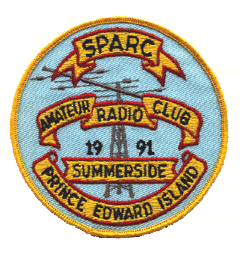Bryan Rawlings, VE3QN
RAC Special Advisor at World Radiocommunication Conferences
On November 21, 2019 at the 2019 World Radiocommunication Conference being held in Sharm El-Sheikh, Egypt, a new allocation to the Amateur Radio Service for Region 1 was approved. The allocation, as it will appear in the International Table of Frequency Allocations, will be for a two-megahertz secondary allocation in 50 to 52 MHz. Through footnotes there will be explicit references to protecting analog television broadcasters, wind-profiler radar systems and fixed and mobile systems in 50 to 54 MHz.
The following countries – Austria, Cyprus, Croatia, Denmark, Spain, Finland, Hungary, Latvia, the Netherlands, the Slovak Republic, Slovenia, the Czech Republic, the United Kingdom and the Vatican City State – have added their name to a footnote whereby they allocate the first 500 kHz of the allocation, viz., 50.0 to 50.5 MHz, on a primary basis.
The Russian Federation have identified 50.080 to 50.280 MHz for a secondary allocation.
A footnote acknowledges an allocation of 50 to 52 MHz on a primary basis in Lebanon.
The primary allocations in the existing Footnote 5.169 for 50 to 54 MHz to Botswana, Eswatini (Swaziland), Lesotho, Malawi, Namibia, Rwanda, South Africa, Zambia and Zimbabwe will be continued as will the primary allocation in 50 to 51 MHz for Senegal.
The following countries – Angola, Bahrain, Burkina Faso, Burundi, Gambia, Jordan, Kenya, Kuwait, Mauritius, Mozambique, Oman, Qatar, Saudi Arabia, South Sudan, Tanzania, the United Arab Emirates and Uganda – have added their names to a new footnote allocating a primary allocation in 50 to 54 MHz. In Guinea-Bissau the primary allocation is 50.0 to 50.5 MHz and in Djibouti it is 50 to 52 MHz. All these new allocations are, however, subject to explicit references to protecting analog television broadcasters, wind-profiler radar systems and fixed and mobile systems in 50 to 54 MHz. For more information please see the map provided below.
If past practice is followed, the official record of these changes will appear early in the New Year in the Provisional Final Acts of the Conference and the changes would take effect on January 1, 2021.
Individual administrations, of course, will follow their own procedures with respect to implementing these changes in their territory. There should be no changes necessary to the regulations governing Canadian Radio Amateurs.
Although Canadian Amateurs are not directly impacted by these allocation changes, an expansion of six-metre operations in Region 1 benefits all Canadian Amateurs. For this reason and in the spirit of joining with our colleagues in the other Regions, Canada is proud to have participated in this achievement.
This outcome concludes four years of meetings and spirited discussions in the International Telecommunication Union’s Working Party 5A, in the International Amateur Radio Union (IARU) Region 1 meetings and in the European Conference of Postal and Telecommunications Administrations (CEPT). A large number of dedicated Radio Amateurs have laboured on this proposal during this period and this outcome represents the best that can be achieved given the differing interests of the many participants. I would be remiss if I didn’t single out for mention Dale Hughes, VK1DSH, who, as in his previous work with our 5 MHz allocation in the 2015 Conference, showed extraordinary patience and courtesy as Chairman of the Working Group that steered this complex document through to a solution acceptable to everyone.
I would also like to thank our regulator, Innovation, Science and Economic Development Canada (ISED) and, in particular, the Canadian Delegation to WRC-19 who, notwithstanding the many complex issues of greater import to them, extended every courtesy and assistance to me as this issue progressed through the Conference.
This participation by Radio Amateurs of Canada is made possible by your contributions to the Defence of Amateur Radio Fund (DARF). “Showing Up” is, as I have said frequently, necessary to the survival of Amateur Radio as we know it. Radio Amateurs of Canada has been one IARU member who has been present in these endeavours for decades and, through your contributions to DARF, we can continue to be counted on to show up.
Map of Africa: courtesy of the RSGB and Murray Niman, G6JYB
To better understand the convoluted footnotes by which certain African countries will have primary allocations, our colleague from the Radio Society of Great Britain (RSGB) has produced the following map.
Countries shown in cyan (greenish blue) on the map – for example South Africa, Namibia and adjacent countries – have a primary allocation in 50 to 54 MHz through a long-standing footnote 5.169 in the Radio Regulations (Senegal: 50 to 51 MHz).
Countries shown in green have a 4 MHz primary allocation by virtue of a new footnote 5.169 bis explicitly defining protection. (Guinea-Bissau 50 to 50.5 MHz; Djibouti 50 to 52 MHz).
Countries shown in red are explicitly identified for protection in 5.169 bis.
Stay tuned to the RAC website and the pages of The Canadian Amateur magazine for more information on the outcomes of WRC-19.
Alan Griffin
RAC MarCom Director
RAC MarCom Director
